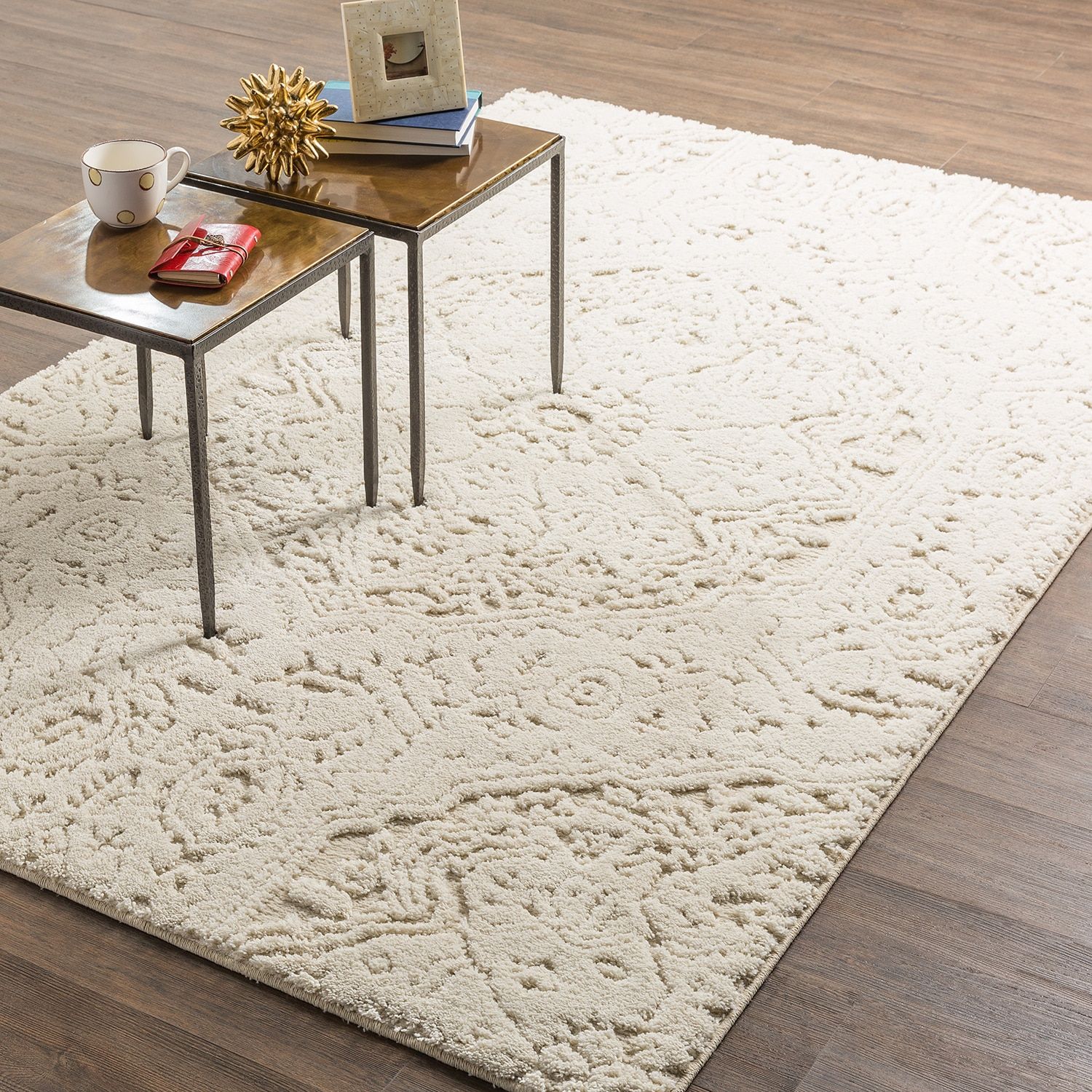Picture this: the heart of your home, where culinary magic happens – your kitchen. It’s where you create masterpieces and gather with loved ones. Now, imagine transforming this space with a simple addition: a kitchen rug. Ready to dive into a world of comfort, style, and durability underfoot? We’ll guide you through finding the perfect rug that not only elevates your kitchen’s aesthetic but also withstands the spills and thrills of everyday cooking.
Why Your Kitchen Needs a Rug: Unveiling the Benefits
Kitchen rugs are more than just decorative accents; they’re strategic design elements that enhance both the practicality and the personality of your culinary space. Let’s explore the compelling reasons why a rug might be the missing ingredient in your kitchen:
- Unparalleled Comfort: Tired of your feet aching after prepping elaborate meals? Rugs provide a much-needed cushion, especially on hard surfaces like tile or hardwood, making those long hours spent cooking or cleaning far more comfortable.
- Style That Pops: Inject a splash of personality and vibrancy into your kitchen with a rug that complements your design aesthetic. Whether your style is modern minimalist, rustic farmhouse, or something uniquely you, a well-chosen rug ties the room together with a touch of flair.
- Zoning for Open Concepts: In open-concept homes, rugs can cleverly define distinct areas within your kitchen, visually separating the cooking space from a dining area or breakfast nook. This creates a sense of order and purpose within an otherwise fluid layout.
- Sound Absorption: Let’s face it, kitchens can be noisy places. The clattering of pots and pans, the whirring of appliances—it all adds up. Area rugs act as natural sound absorbers, muffling those echoes and creating a calmer, more serene atmosphere.
- Warmth Underfoot: Tile floors, while elegant, can feel shockingly cold, especially during those chilly winter months. A rug adds a layer of insulation, making your kitchen a cozier and more inviting space to enjoy year-round.
Choosing the Perfect Kitchen Rug: Key Considerations
Navigating the world of kitchen rugs can feel overwhelming, but fear not! Armed with the right information, you’ll be well-equipped to select the ideal rug for your culinary haven. Here’s a breakdown of the essential factors to keep in mind:
1. Material Matters: Balancing Durability and Style
The kitchen is a high-traffic area prone to spills and splatters, so choosing a durable and easy-to-clean rug material is paramount. Let’s explore some popular options:
-
Synthetic Fibers: These are the workhorses of the rug world, known for their exceptional durability, stain resistance, and effortless cleaning. Consider these top contenders:
- Polypropylene: Highly resistant to fading, moisture, and stains, making it a top choice for busy kitchens.
- Nylon: Known for its exceptional durability and resistance to abrasion, this material holds up well to heavy foot traffic.
- Olefin: A budget-friendly option that boasts excellent stain and moisture resistance, making it ideal for spill-prone areas.
-
Natural Fibers: Natural fibers, while beautiful and often eco-friendly, might require a bit more care. Here’s a closer look:
- Cotton: Soft underfoot and available in a variety of colors and patterns, cotton rugs are a popular choice for kitchens. However, they tend to be more absorbent and prone to staining, so regular cleaning is essential.
- Jute and Bamboo: These natural fibers bring an earthy, organic feel to the kitchen. While durable, they might not be the best choice for areas prone to moisture.
Expert Tip: For the ultimate combination of durability and style, many interior designers recommend opting for low-pile rugs in the kitchen. Low-pile rugs are easier to clean and less likely to trap crumbs and spills compared to their high-pile counterparts.
2. Size and Shape: Finding the Perfect Fit for Your Kitchen
Before you fall head over heels for a stunning rug, grab a measuring tape and determine the ideal size and shape for your kitchen layout.
- Runners: These long, narrow rugs are tailor-made for galley kitchens or for placement in front of sinks or countertops, protecting floors from spills and splashes.
- Small Mats: Perfect for strategically placing in front of the sink, stove, or other high-traffic areas where spills are likely to occur.
- Large Area Rugs: If you have a spacious kitchen or an open-concept layout, a large area rug can define a dining space, create visual interest, and tie the entire room together.
Pro Tip: When measuring for a rug, consider leaving a border of bare floor around the edges to prevent the rug from overwhelming the space or posing a tripping hazard.
3. Non-Slip Backing: Safety First in the Kitchen
Kitchens are bustling spaces, so safety should always be a top priority. To prevent accidental slips and falls, opt for rugs with a non-slip backing or invest in a rug pad to keep your rug securely in place. This is especially crucial in areas prone to moisture, like near the sink or dishwasher.
4. Style and Design: Reflecting Your Kitchen’s Personality
Now for the fun part—infusing your personal style into your kitchen décor! With countless colors, patterns, and textures to choose from, your kitchen rug can either blend seamlessly with your existing décor or make a bold statement.
- Matchy-Matchy Magic: If you prefer a cohesive and coordinated look, choose a rug that complements your kitchen’s color palette, cabinet finishes, and overall style. For instance, a geometric-patterned rug can beautifully complement modern kitchens, while a traditional Persian rug can add warmth and character to a more classic space.
- Eclectic Charm: If you love to experiment with different styles and aren’t afraid of a little visual intrigue, don’t hesitate to choose a rug that contrasts with your kitchen’s existing décor. A brightly patterned rug can add a vibrant focal point to a neutral kitchen, while a rug with a bold geometric print can create a sense of modern sophistication.
5. Budget-Friendly Tips: Finding Value Without Compromising Style
Kitchen rugs can range in price from budget-friendly to luxuriously expensive. Setting a budget before you start shopping can help you narrow down your options and avoid overspending.
- Shop Around: Compare prices from different retailers, both online and in-store, to ensure you’re getting the best deal.
- Consider Durability: While it might be tempting to opt for the cheapest rug available, investing in a slightly more expensive rug made from durable materials can save you money in the long run, as it will need to be replaced less frequently.
- Read Reviews: Before making a purchase, take the time to read online reviews from other customers. This can give you valuable insights into a rug’s durability, stain resistance, and overall quality.
What Kind of Area Rug is Best for a Kitchen?
While the ultimate choice depends on your specific needs and preferences, here’s a quick breakdown to steer you in the right direction:
- For Maximum Durability: Polypropylene rugs are the champions of stain and moisture resistance, making them ideal for high-traffic kitchens and those with young children or pets.
- For Comfort Underfoot: If you spend a lot of time standing in the kitchen, anti-fatigue mats can be a lifesaver. These mats are designed to reduce stress on your feet, legs, and back, making those long cooking sessions much more enjoyable.
- For a Touch of Luxury: Woven vinyl rugs offer a beautiful blend of style and practicality. These rugs are incredibly durable, easy to clean, and often feature intricate patterns and designs that mimic natural fibers like sisal or jute.
Should I Put a Rug in Front of the Kitchen Sink?
A rug in front of the kitchen sink is a strategic design move that combines both practicality and aesthetics. Here’s why it’s worth considering:
- Ultimate Comfort: Washing dishes or prepping food can turn into a marathon standing session. A cushioned rug underfoot provides much-needed support and comfort, making those kitchen tasks far more enjoyable.
- Spill Protection: Let’s face it, spills are an inevitable part of kitchen life. A rug positioned in front of the sink acts as a protective barrier, catching those drips and drops before they reach your flooring.
- Enhanced Safety: Wet floors are an accident waiting to happen. A rug, especially one with a non-slip backing, provides traction and helps prevent slips and falls, keeping your kitchen a safe space for everyone.
Maintaining Your Kitchen Rug: Tips for Lasting Beauty
To keep your kitchen rug looking its best and prevent the buildup of dirt, crumbs, and allergens, regular cleaning is essential.
- Vacuum Regularly: Vacuum your rug at least once a week, or more frequently in high-traffic areas, to remove loose dirt and debris.
- Spot Clean Spills Immediately: The key to preventing stains is to address spills as soon as they happen. Use a clean cloth or sponge to blot up the spill, working from the outside in to avoid spreading it further.
- Deep Clean Periodically: Depending on the material and the amount of foot traffic your rug receives, aim to deep clean it every few months, or as needed. Refer to the manufacturer’s cleaning instructions for guidance on the appropriate cleaning method for your specific rug.
Remember, a kitchen rug is an investment in both style and comfort. By carefully considering the factors outlined in this guide, you’ll be well on your way to choosing the perfect rug to transform your kitchen into a space that’s as functional as it is beautiful.
If you’re looking to create a functional and stylish kitchenette in your home. Check out this guide to kitchenette ideas.
- How to Get Rid of Mushrooms in Your Lawn: A Complete Guide - April 24, 2025
- How to Get Rid of Ground Hornets: A Safe and Effective Guide to Eliminating Nests - April 24, 2025
- How to Get Rid of German Roaches Fast: DIY Methods for Quick Control - April 24, 2025










